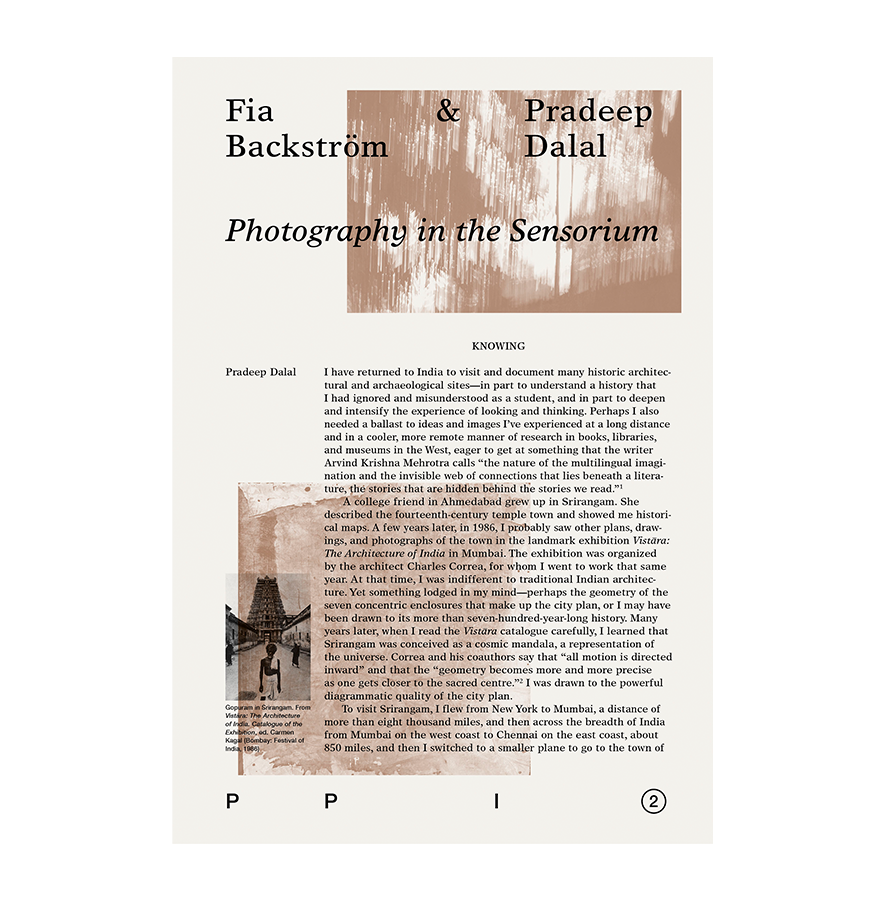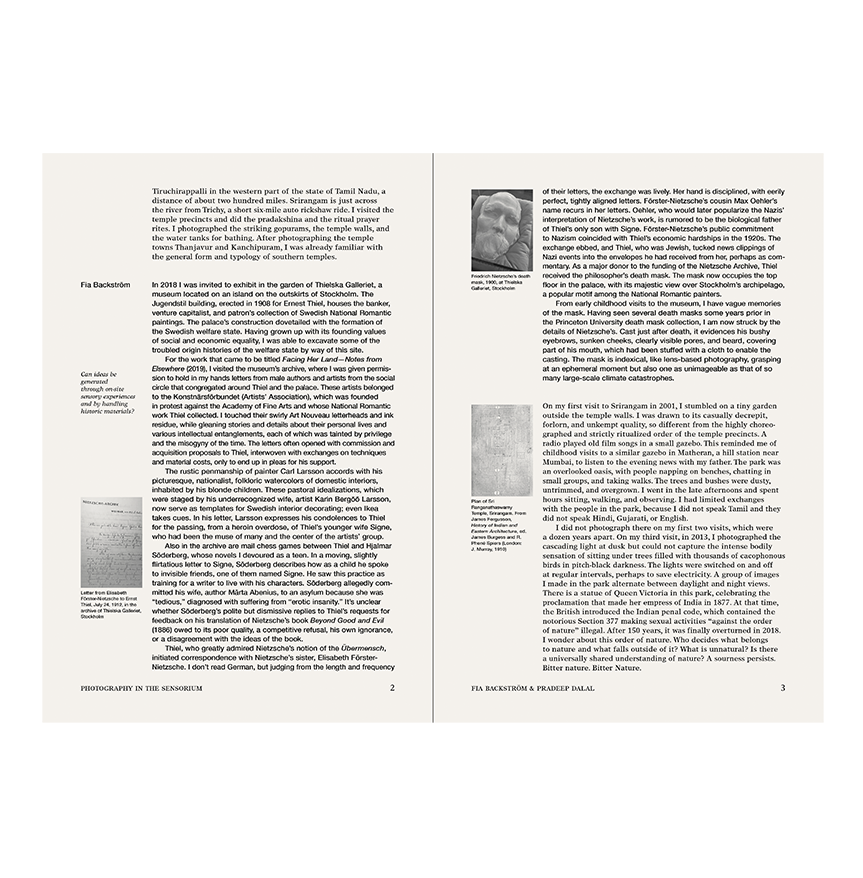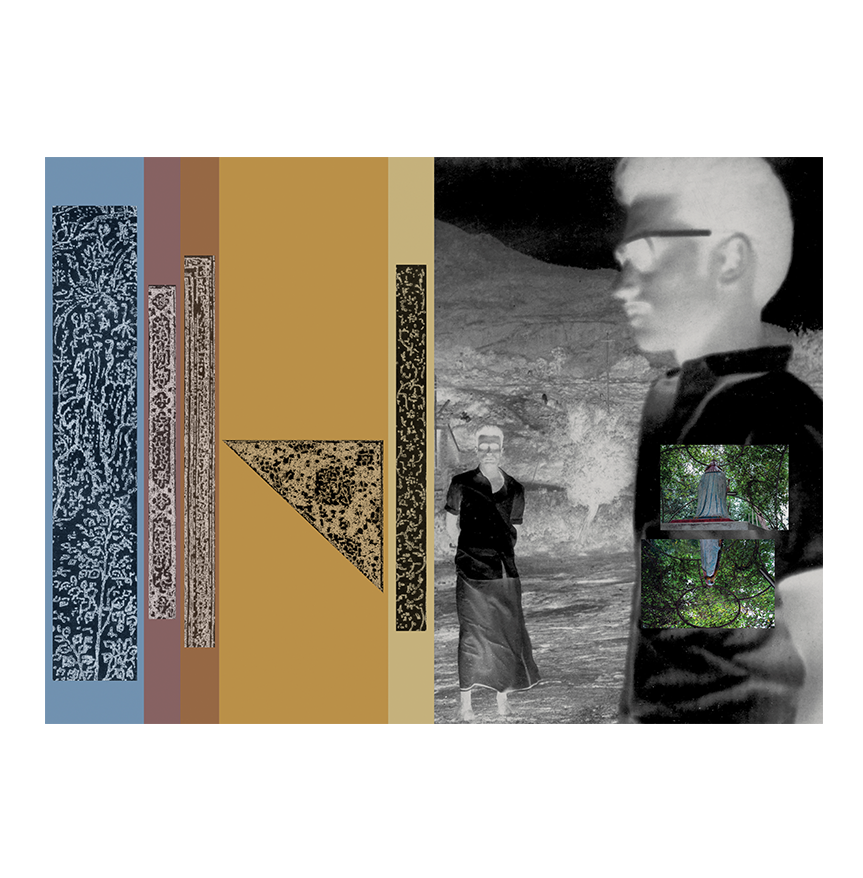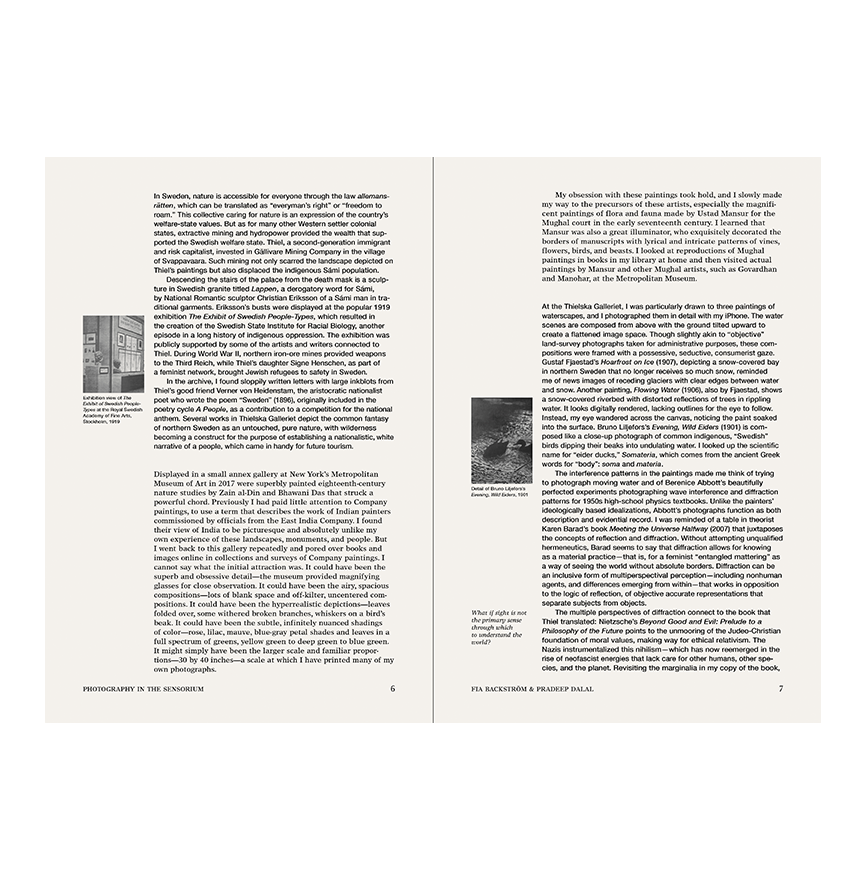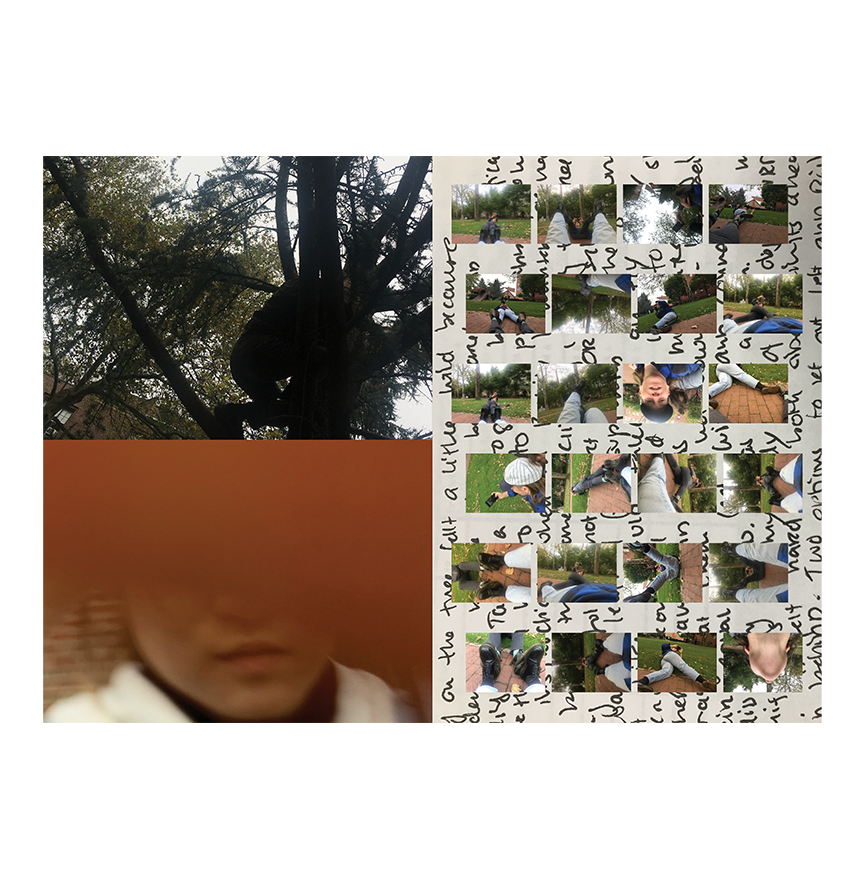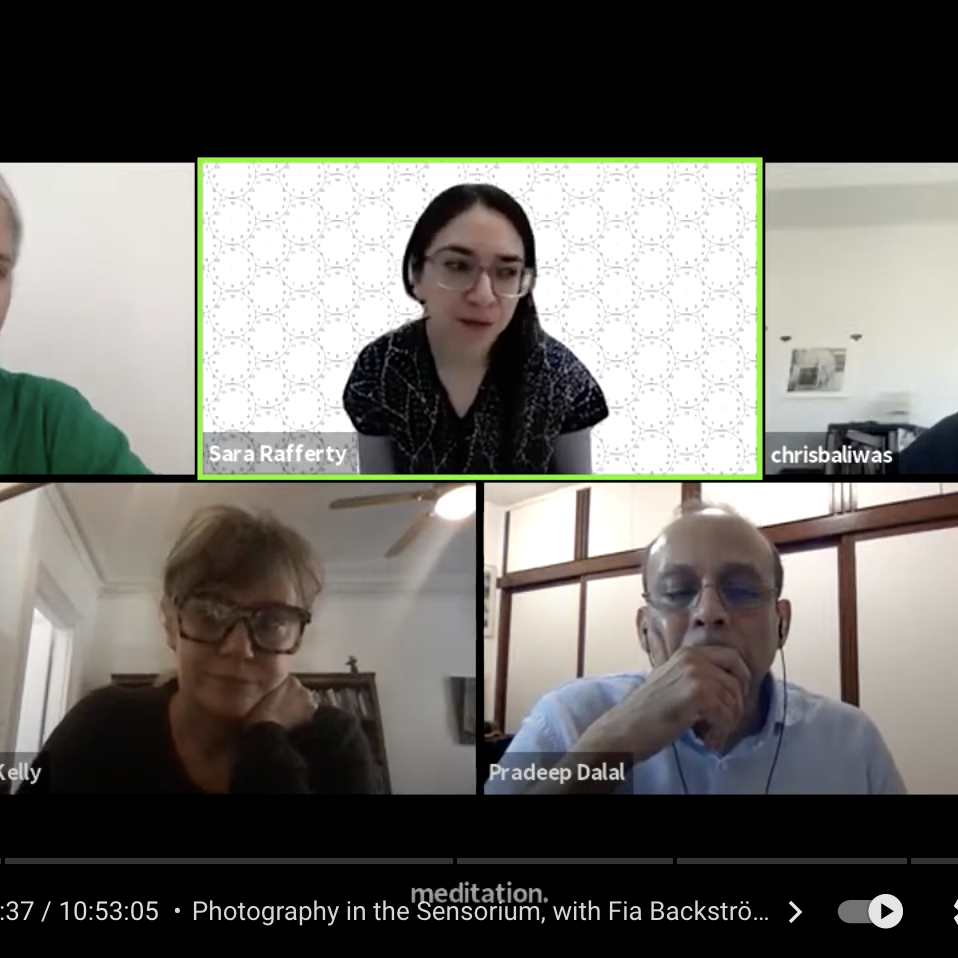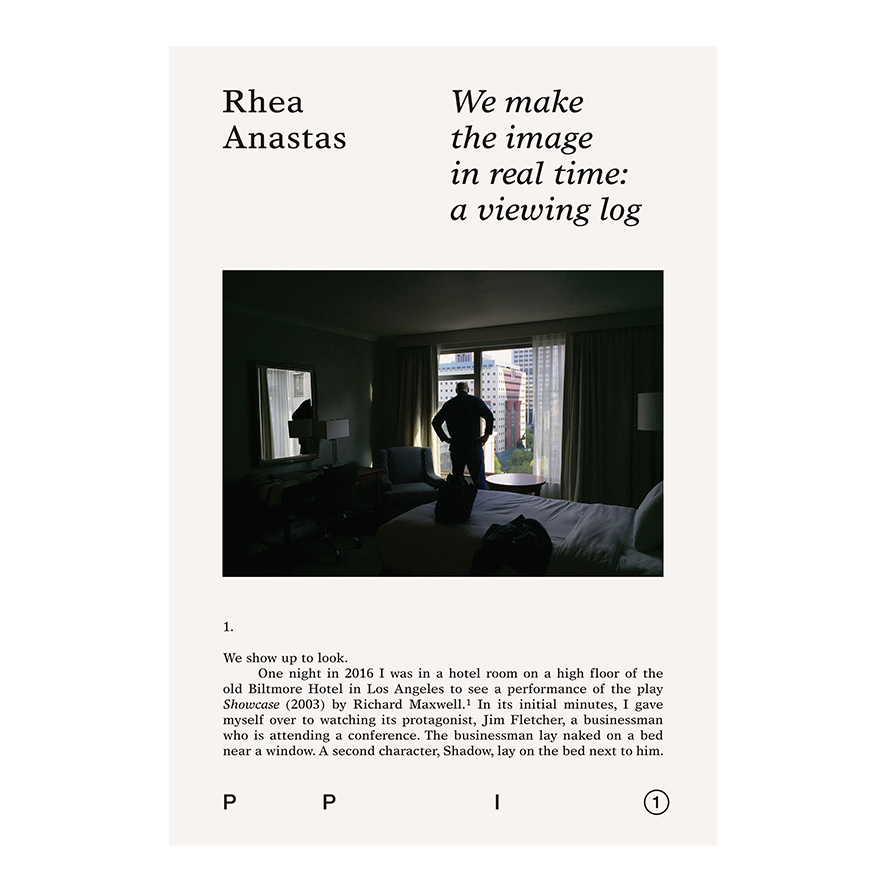PPI 2: Photography in the Sensorium by Fia Backström and Pradeep Dalal
Pounds Per Image, no. 2, copublished with Pratt Photography Imprint in 2021
Edited by Shannon Ebner
Design by Chad Kloepfer
32 pages, 16 black-and-white and 64 color images, staple-bound, 9 ¾ x 6 ½ inches
ISBN-13: 978-1-733688-7-0
$15.00
In an age defined by the immaterial transmission and circulation of images, the Pounds Per Image (PPI) series makes research, scholarship, and practice the centerpiece of its gravity-bound mission. By commissioning artists, writers, curators, and other voices in the polyvocal field to produce original material about photography, PPI endeavors to make contributions to the discursive field beyond the walls of Pratt Institute. Six volumes, ranging in signature count from eight to thirty-two pages in response to each of the projects PPI supports, will be published over the course of six years, eventually bringing the page count to one full book.Fia Backström and Pradeep Dalal’s coauthored essay “Photography in the Sensorium” derives from TEACHING PHOTOGRAPHS, a symposium held in fall 2019 at Pratt Institute coorganized by Ebner and Sara Greenberger Rafferty, the director of the MFA program in the Photography Department. Participants in the symposium were invited to respond to pedagogical questions, including: How do photographs teach? How do photographs perform? How are photographs made? Backström and Dalal led a workshop that highlighted aspects of their respective artistic practices and educational methodologies as cochairs of the Photography Department in the MFA program at Bard College from 2015 to 2020. The two artists then developed material from that workshop into their text for PPI #2—interweaving their own voices as artists and educators engaged in the study of images and asking questions from the reader about what it might mean to know, handle, and name photographs, privileging not only sight and seeing but also the full range of bodily senses.
Quotes
PPI was prompted by a nagging question about institutional progress. Can a modest publishing project that releases one signature per year for six years affect discourse within institutions? Can it accelerate or even possibly decelerate how we think about images in our classrooms and cultures at large? Every generation shoulders the weight of an image inheritance—images that appear to be without gravity in substance but not in matter, images that populate invisible channels like orphans of the dispossessed. But images can also be property, objects of great contestation and also hopefully renewal. Who cares for images, who is watching over them, who cares for the impact they have on our lives, what they show us and tell us about living in the world and about the things we look away from but must see. And why ask these questions alone when you can ask them in public, where they can go to work on the next generation of image makers and thinkers in the halls of the places that we call school.
—Shannon Ebner
